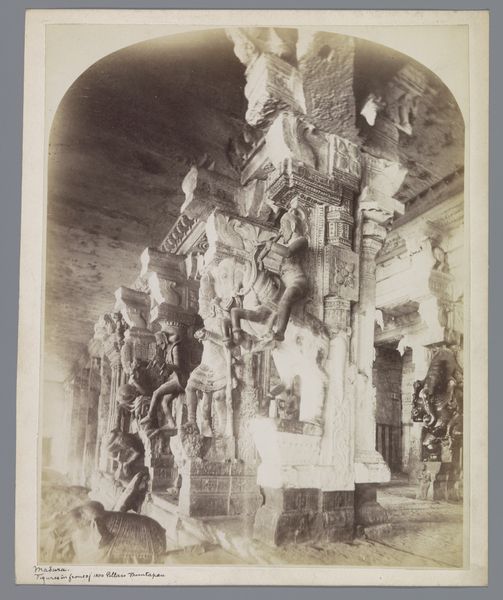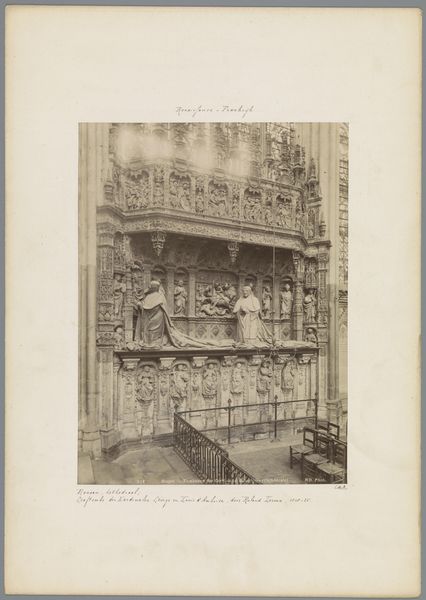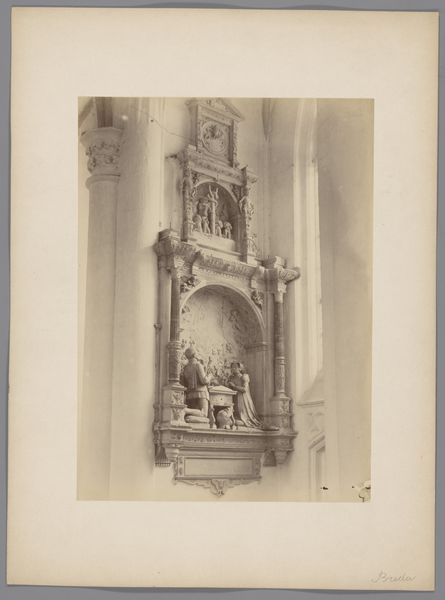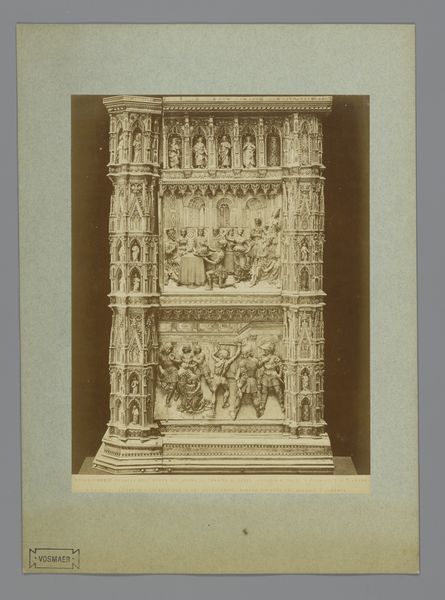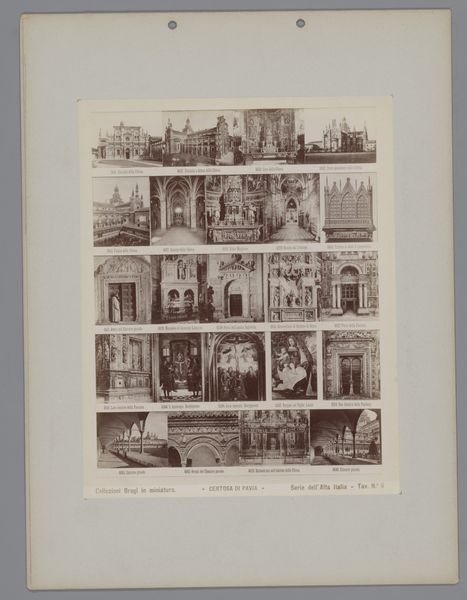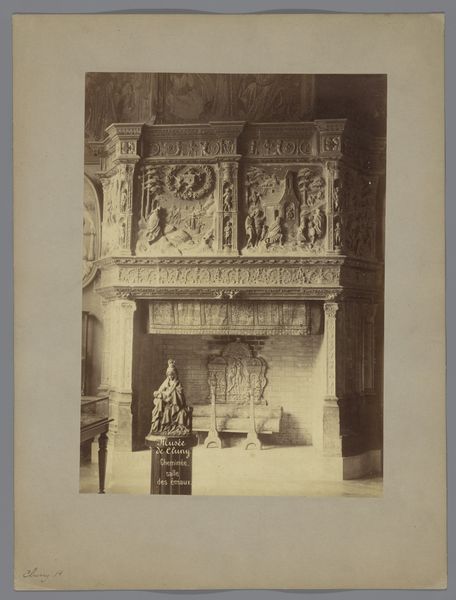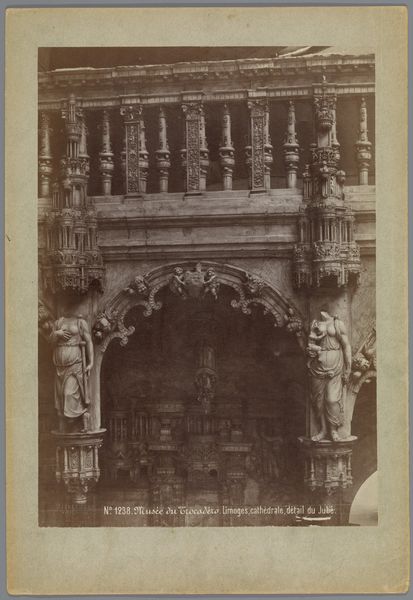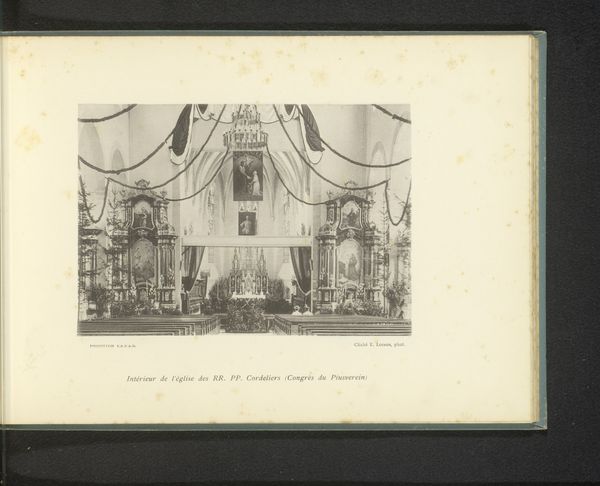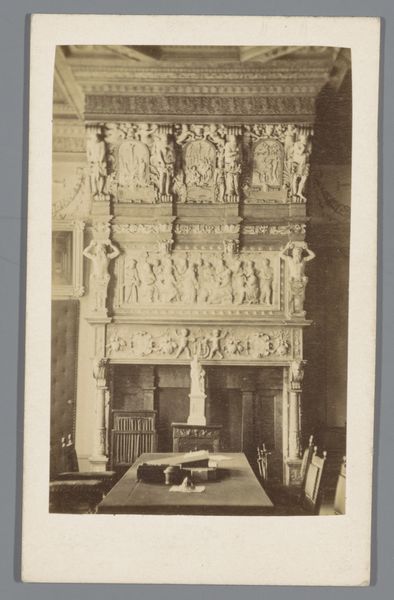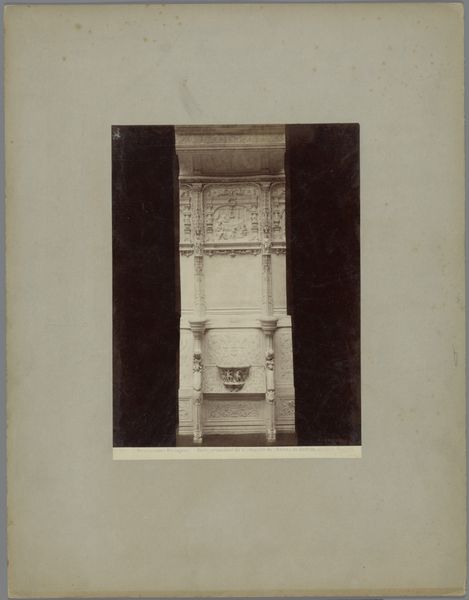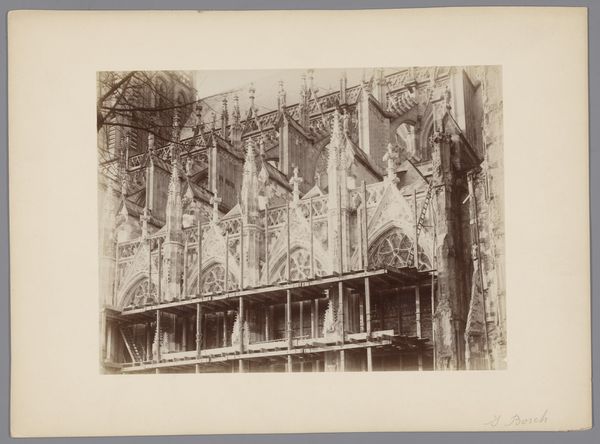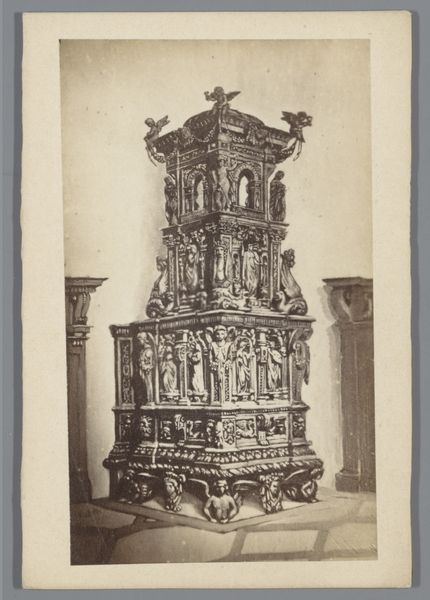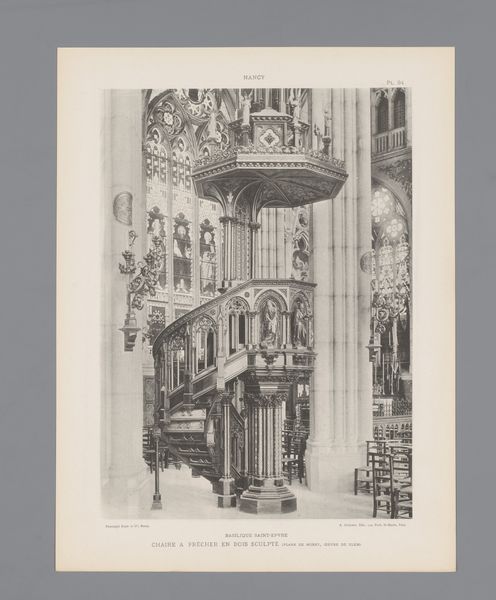
Copyright: Public Domain
Curator: Oh, I find this work incredibly compelling. It’s "Verona: The Scaliger Monument," a photograph by Jakob August Lorent, taken around 1853. Made with the albumen print process, it’s an interesting take on architecture as a romantic landscape. Editor: It’s stunning how the monument just explodes out of the picture plane! There is a curious tension; this dense monumentality versus this almost fading, dreamlike tonality that photography in the 1850's was just starting to play with. Curator: Yes, it's that ethereal quality combined with the precision of early photography, like he is painting with light and shadow. And, of course, the subject itself, this elaborate Gothic structure juxtaposed against the everyday building behind it creates a fascinating contrast. Editor: Absolutely. It's an architectural palimpsest—layers of power, of the spectacle of wealth and death literally built into the city's fabric. It feels impossible to disassociate this aesthetic display of a specific ruling family, with the social implications of inherited authority and class stratification of the time. Curator: The figures look down with certainty, don’t they? As an artist, I often find myself grappling with the hubris of permanence when working on public projects or commissions. Can anything truly last? Editor: That question of legacy, who gets remembered and how—photography allows us to revisit, critique, and sometimes dismantle those narratives. Curator: And maybe even poke a little fun at them? I feel like Lorent allows a glimpse behind the curtain of grandeur. You notice the way the windows interrupt the lines? Or is that just me being cheeky? Editor: No, no, I think it’s valid, and the windows point toward the daily lives that unfold around these displays of power and prestige. And what happens when those old displays literally show their age! The architecture is crumbling...it is wonderfully poetic. Curator: It feels both solid and transient at the same time. A monument to power and legacy seen through the fleeting lens of time and early photography. Editor: Exactly, the interplay between permanence and impermanence offers space to imagine alternate readings of power and value. Curator: I think I’ll walk away with a revitalized understanding of how structures can be statements and whispers simultaneously. Editor: And how photography allows us to capture, question, and reframe even the most enduring displays.
Comments
No comments
Be the first to comment and join the conversation on the ultimate creative platform.
